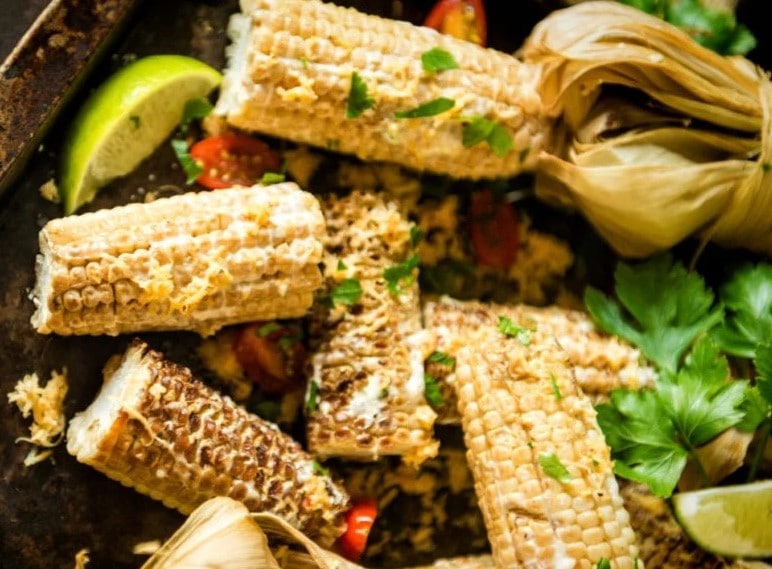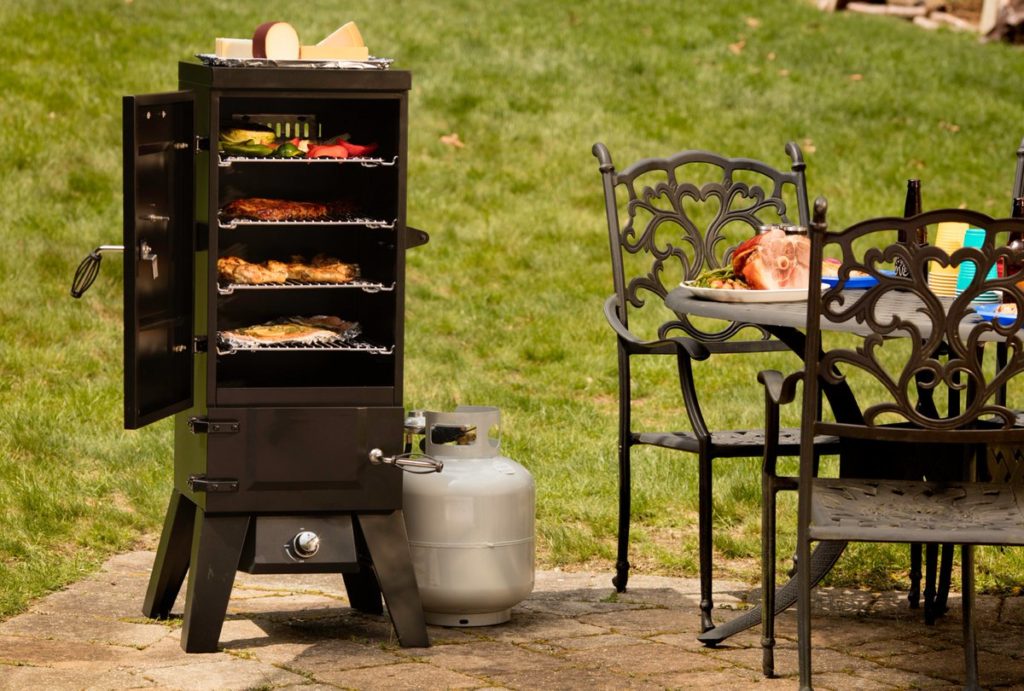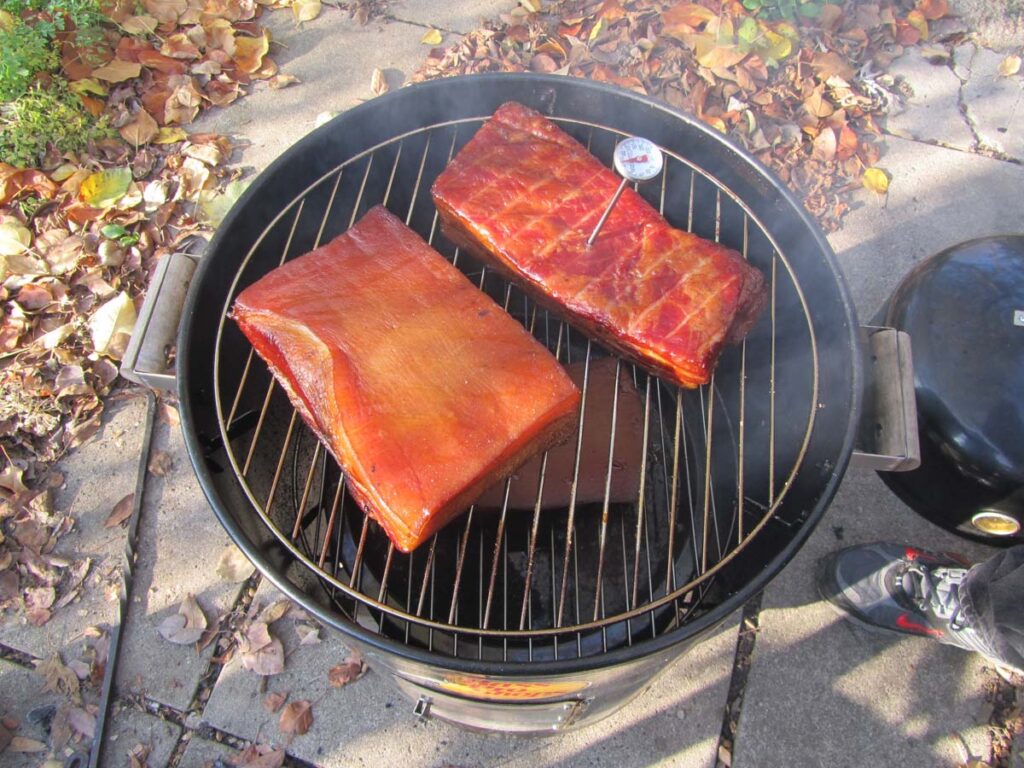

Brisket is a very complicated meat part to smoke at home unless you’ve tried it a few times and have finally mastered the whole process.
The making of the brisket takes some patience and time. One of the main dilemmas people face when preparing the meat is whether to wrap it and whether it should be unwrapped.
Knowing when to wrap brisket before grilling is a matter of your preferences, the brisket size, and the smoking temperature. However, in any case, the real benefit of wrapping is that it locks in the meat’s natural juices and helps you get a more tender brisket.
And if you’ve decided to wrap your brisket before smoking, asides from the technical benefits, you have to think about using a nontoxic material or using the wrap in a way that the toxins in the wrap will not get into the brisket.
There are a few situations that necessitate brisket wrapping and there are three considerations to think about before wrapping your brisket.
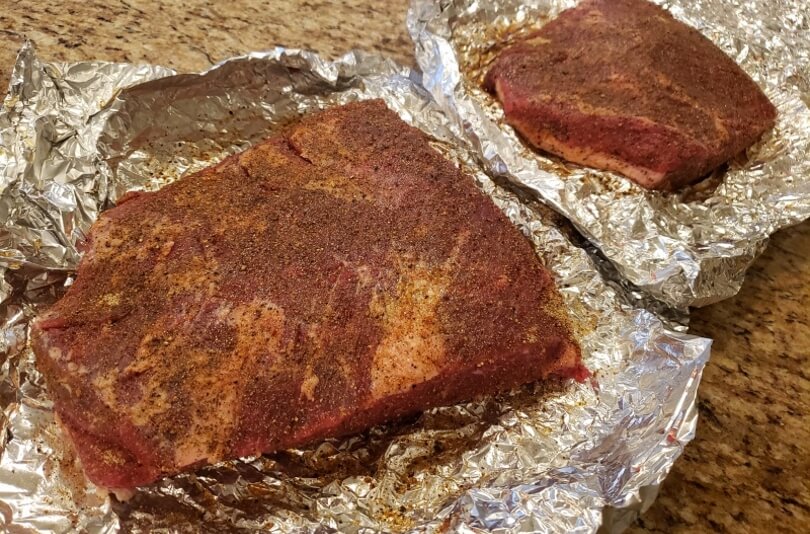
The main reasons for wrapping will be to keep liquids from drying out, you may need to wrap a small piece of brisket before cooking.
A piece of 7-pound brisket can be prepared to be wrapped in 3 cooking hours while a 15-pound brisket cooks up to 6 hours before requiring wrapping.
Your smoker’s temperature can also affect the time the brisket needs to be wrapped. At a low mperature, it cooks slowly and takes more time to prepare for wrapping.
But when the grill is at about the higher end of your temperature range, around 275 degrees, then it will dry the brisket juice faster and, as a result, cause a premature need for wrapping.
In any case, an entry-level smoker should be fine. You can also make use of a smoker grill combo too if that’s what you have. But keep the temperature in check with a thermometer.
There is no principle in smoking. Pitmasters follow whatever they find that works, regardless of whether it’s the meat or the cooking time based on flexible temperatures.
However, we don’t all have the patience. You can use a temperature of around 155 degrees Fahrenheit. Although the faster path looks more fascinating, you have to be patient with the brisket so you can enjoy it in its best tastes.
To wrap or not to wrap the brisket: there are usually two main choices that you can follow when smoking the brisket. It’s either you wrap or you smoke it bare.
Since the two approaches have a difference in the result, you need to understand the fundamentals as well as how they independently affect the meal.
A lot of people are keen to smoke the brisket wrapped up. This technique however, has its share of advantages.
The very first thing you get in wrapped briskets is tenderness. Also, the meat will be filled with juice and moisture. Although it doesn’t taste as bare brisket, there’s still a smoky taste in it. To get some smokey taste, you can choose to start smoking naked and then wrap it along the way. What’s more? It also comes out in a gorgeous color.
Meanwhile, if you would like to enhance the color, smokiness, and the appearance, it is possible to partly wrap the brisket.
The next major goal is to break through a stall that is the cooking time once the meat’s inside temperature stops rising when the moisture from the surface of the meat is totally evaporated.
By wrapping the meat halfway, you can reduce its cooking time without complexity.
The best way to smoke is on a low heat. And the best way to add spices and have a great result (the taste and the bark) is without wrapping. But if the meat is stiff, this will take you a long time to smoke it to a tender texture if it’s naked and unwrapped.
It’s been found that unwrapped brisket can take about 15% longer to finish cooking than wrapped brisket. However, the sad thing is that because of the lengthened period, the meat can even drain up the moisture. And this could lead to a dry brisket in the end.
Plus, there are a lot of unmissable perks of smoking the meat bare as well. Because it has no surface wrapping, you are giving the meat optimal exposure to heat as well as the smoke. This will increase the flavor. Also, the color of the bark is great because the heat has a direct impact on the meat.
Therefore, if you are anxious to get past the danger of drying the brisket out, the priority would be to get a smoky, crispy, and robust flavor and then choose to smoke in naked form. Moreover, by incorporating the sauce or the rub, you can also add an artificial taste to the cured meat.
If you’ve decided to wrap your brisket, you should know that there are different ways to wrap it.
So, technically we have two main choices used to wrap the brisket.
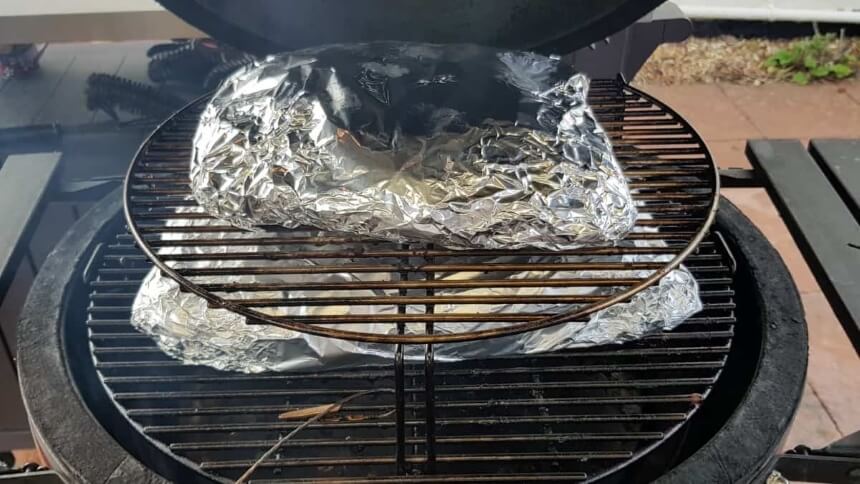
It makes up a kind of miniature oven for your brisket. It does not allow the changes in temperature to affect the brisket. In addition, the transparency allows the brisket to cook.
The main benefit of using aluminum foil is in its stability. However, if you still want to use it, seperate it from the meat with a baking or sandwich paper. This way, you can take advantage of the foil’s stable properties while not having the health risks.

It offers almost all the benefits of wrapping with foil and more. However, you don’t need to give up that smoky taste or the bark color. This helps the meat breathe, an advantage that is not present in foil wrapping.
Next, we are going to show you the different ways to wrap your briskets. We will see how to wrap it in butcher paper and how to wrap it in aluminum foil. We’ll start with the aluminum foil method.
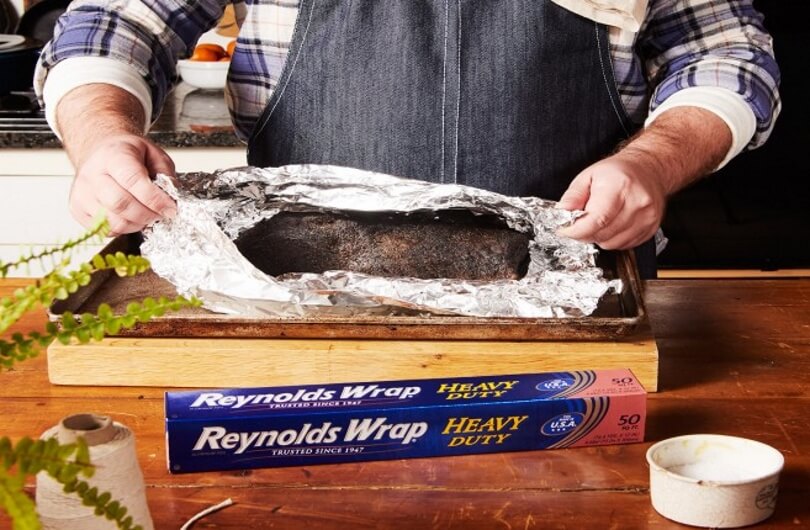
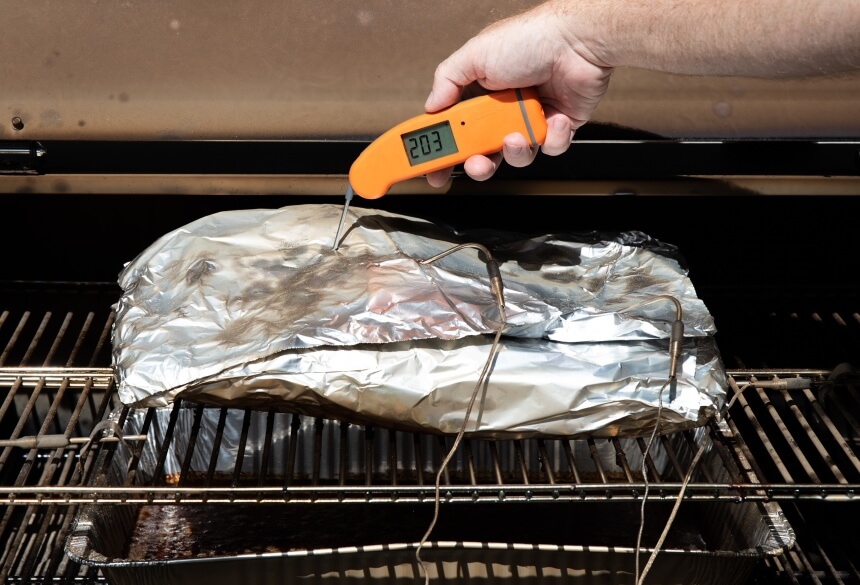
Below are some easiest ways to cook a brisket wrapped either in butcher’s paper, or in aluminum foil.
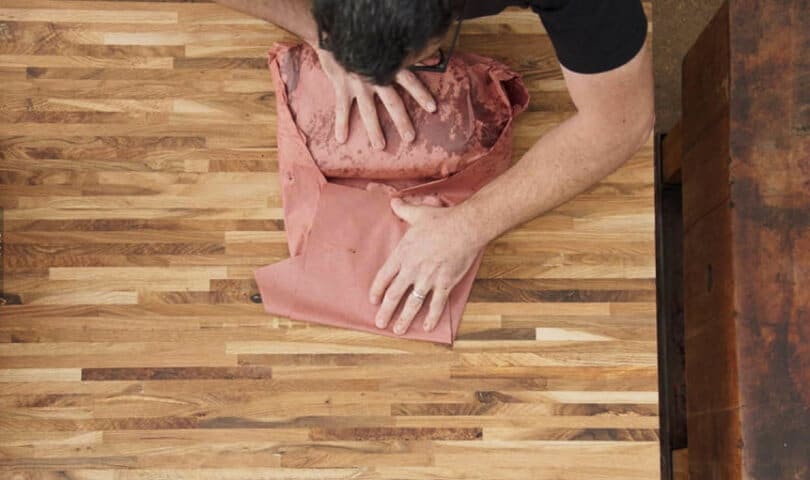
When your brisket gets to around two or three hours from being done, just pull it out of the pit. Then wrap it in aluminum foil or butcher’s paper.
Use two 18 inches wide (about 1.6 feet long) pieces of pink butcher paper or foil. Next, you’re going to overlay the brisket and fold the wrap tight on the meat to keep the juices in.
Once you get the brisket wrapped, get it back on the pit to finish smoking. You then need to cook anywhere from 1 to 3 more hours wrapped up in the pit.
When you’re using the paper, you’ll know it’s done cooking when the butcher paper is drenched. This way, you will know that the fat has rendered out and the brisket is near done.
At this point, you can pick up the brisket and feel the floppiness which will tell you if that brisket is done or not. You could also use your temperature probe to determine your desired finish temperature which is typical, for most people, around 195 to 203 degrees.
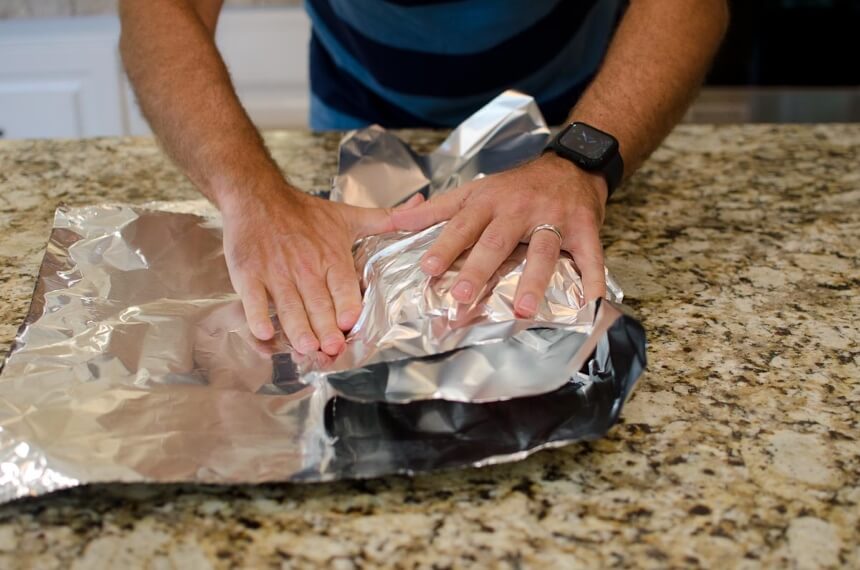
The right brisket marinade can protect against harmful substances such as polycyclic hydrocarbons and HAA.
A marinade made from antioxidant spices like thyme, rosemary, and sage, as well as olive oil, lemon, and garlic can protect your food from oxidation when grilling.
To inhibit HAA formation, scientists examine a lot of marinade ingredients. They checked out their protective effects. They found that onions, garlic, rosemary and grape seed extract were able to reduce HAA formation.
This worked best with a marinade made from ginger, garlic, thyme, and rosemary. They can reduce HAA formation by an impressive 74 percent.
We mentioned at the beginning of the article, a brisket sometimes requires a lot of patience and time to smoke. However, if you feel like giving it a try at home, be sure to wrap it at the right time and temperature, if you choose wrapping it in any way. Our introduced strategies and guides can help you with a well-made brisket.
Now you know when to wrap brisket, the advantages of doing that, the disadvantages, and the health risks. The thought of using aluminum foil shouldn’t give you worries. All you need to do is protect the meat with marinade. If this is is still a concern for you, you can decide to wrap it in butcher’s paper, which is made from a natural material and lets the meat breathe.
